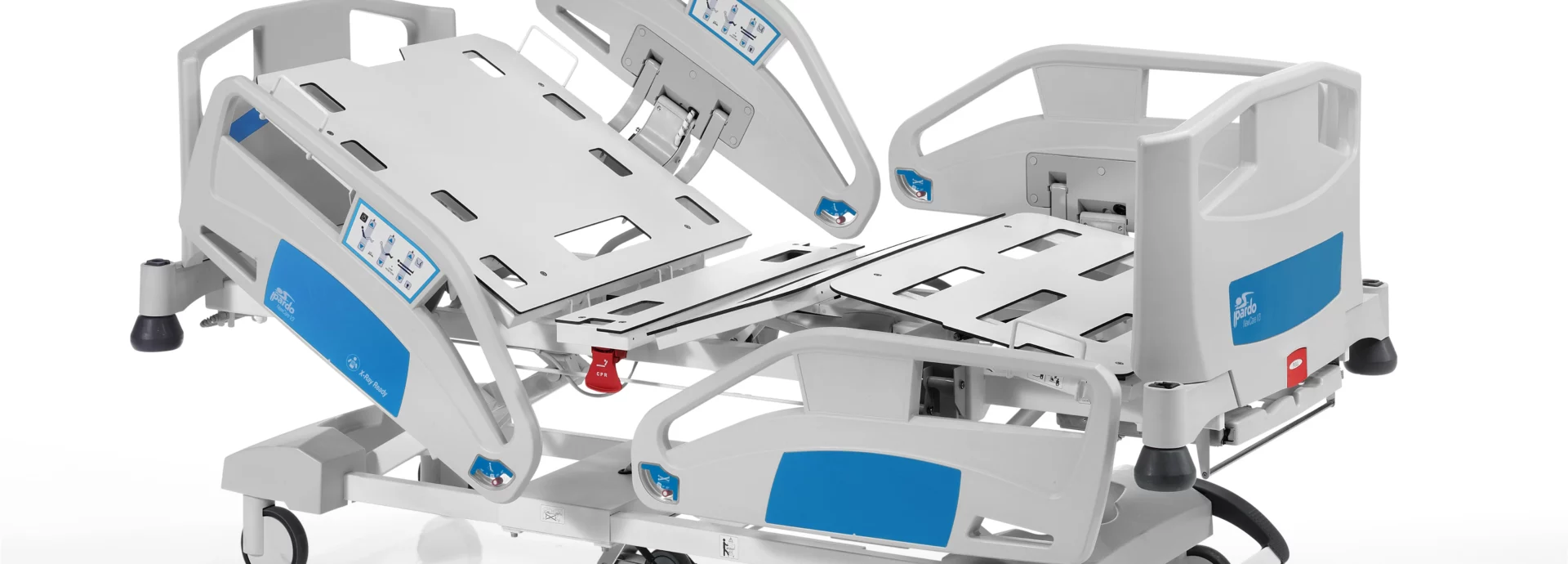Why would you use split siderails on a bed?
Posted on 8 August 2018 By Aaron Stretton

In This Article
Split siderails are becoming more popular on care beds everywhere, and we can understand why. Split siderails are more flexible,…
Split siderails are becoming more popular on care beds everywhere, and we can understand why. Split siderails are more flexible, safer, easier, and versatile than full-length bedsides. Here’s why.
Split siderails are more flexible
Full-length siderails are rigid when it comes to changing a patient’s position in bed. Because split siderails are in two parts, they tend to be a lot more flexible to work with in profiling positions.
This means that if you want to raise the head end of the bed, then the siderail can raise with it without compromising on any other section of the bed itself. This works the same way with the foot end of the bed.
Split bedsides are also much more flexible in terms of length adjustment. With beds that are length adjustable, full-length bedrails do not fit and so you must get an extra set of longer ones to fit the new length of the bed.
Split bedrails are integral to the head and footboard of the bed, so there is no need to adjust or swap them in and out whenever the length of the bed is changed.
It’s safer for patients
One of the main benefits of split siderails is that they can move with the headrest or footboard whenever the position of the bed is change. Full-length siderails can only stay in one position, so if your patient needs to sit up in bed, then the bedside simply won’t protect them that far up.
With split siderails, you can rest assured that your patient is protected because the siderail can be moved and raiser with the head or footboard as needed.
One bed in particular uses a unique design that also helps to simplify bedsides for patients. The Interlude Platinum has siderails that actually fold away underneath the mattress platform when they’re not needed.
This contains any obstacles that may be caused by the siderails, and it looks a lot better on the bed itself.
Split siderails can also be used as a mobilisation aid and can lock to any height to ensure that the patient can push up to standing from them with no worries about them moving.
Split siderails are easier for patients
One of the downsides of full-length bedrails is that you can’t have a built-in control panel on them. This makes it more difficult for the patient to determine their own comfort and positioning.
Integrated controls can be included in split siderails — like on the Interlude range. The panel can be installed on the head section of the bed giving the patient the ability to control the bed.
Another factor to consider is how full-length siderails can sometimes be rather ugly and uninviting. Full-length metal concertina siderails are particularly horrible for patients to have to stare at every day.
With split siderails, you have the option of using different materials within them that still offer the same amount of protection and safety, without feeling prison-like or intimidating. On some siderails the split allows for integrated mesh which is more patient-friendly.
Easier for caregivers
Split siderails are also a lot easier for caregivers to use — and they can actually be quite helpful!
Some split bedsides are equipped with built-in angle indicators showing perfect 30° positions and such. This gives caregivers the ability to determine the exact position that their patients are in.
Split siderails can also be easily removed from the bed when they are not needed. They also give you the ability to choose how many siderails you want on a bed.
This also makes it cheaper in the long run because you don’t necessarily have to buy four siderails for every bed. You may choose to only get a couple that can then be changed between different beds as you see fit.
Final Thoughts
Ultimately, there are a lot of positives to split siderails that you just don’t get with full-length ones. They’re safer; easier; and more versatile. If you’re looking for a bed with split siderails but aren’t sure on what to go for, then get in touch with our team for some helpful advice.
We think you might also be interested in...
Speak to The Experts
Need assistance with product enquiries, general inquiries, or product support? Our Phonelines are open 9am - 5pm Monday to Friday
0113 519 0319
Or, fill out the form for a call back.
